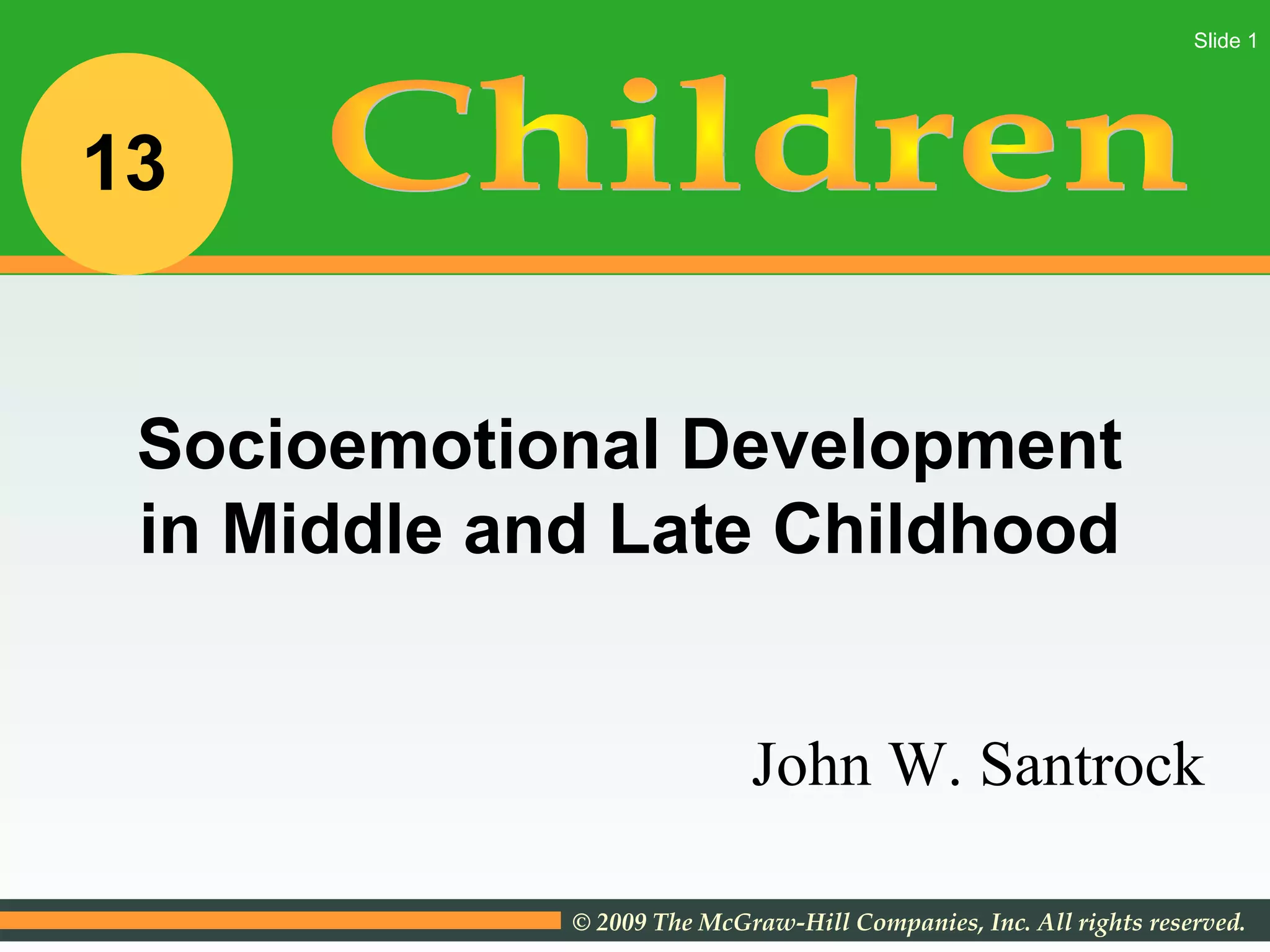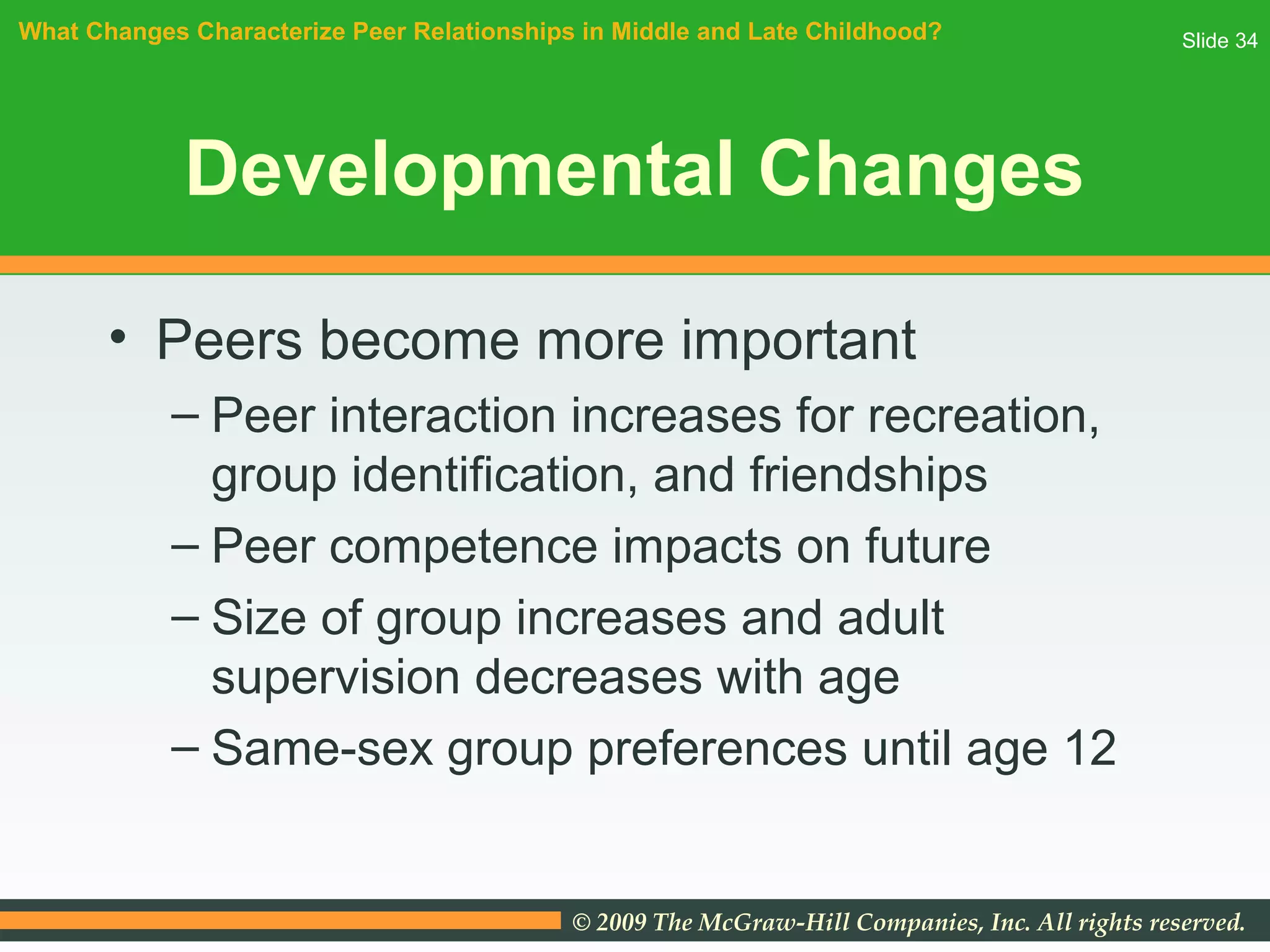This document summarizes a presentation on socioemotional development in middle and late childhood. It covers four main topics: 1) the nature of emotional and personality development, including self-concept, moral development, and gender differences; 2) changes in parenting and families such as decreased parent involvement and increased numbers of stepfamilies and latchkey children; 3) changes in peer relationships such as the increasing importance of peers, different peer statuses (popular, rejected), and risks of bullying; and 4) aspects of schools and their importance for socioemotional development.
















































